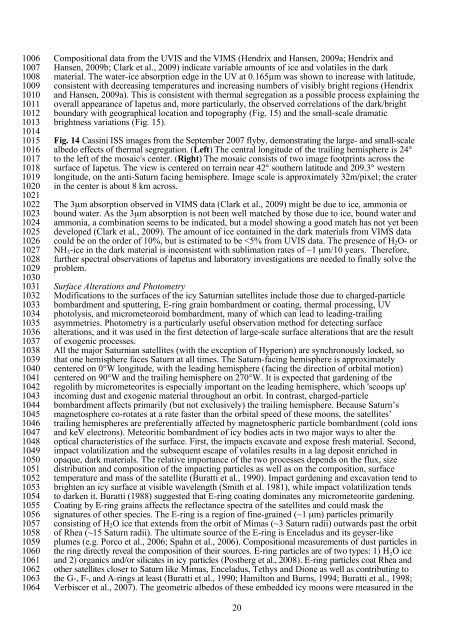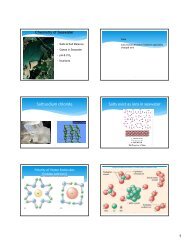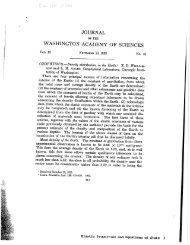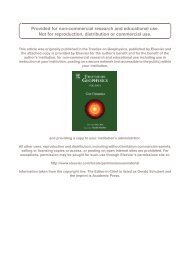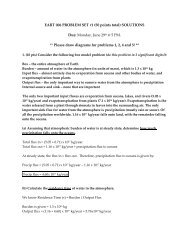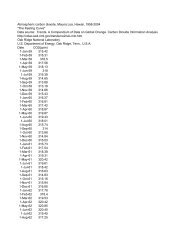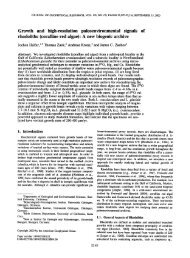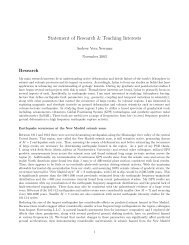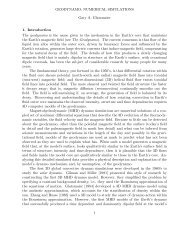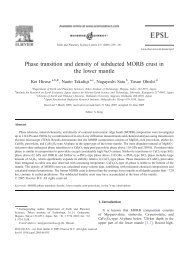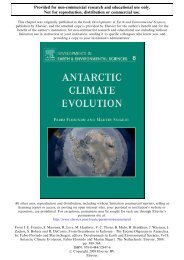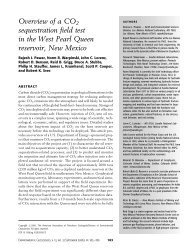Reprint - Earth & Planetary Sciences - University of California, Santa ...
Reprint - Earth & Planetary Sciences - University of California, Santa ...
Reprint - Earth & Planetary Sciences - University of California, Santa ...
Create successful ePaper yourself
Turn your PDF publications into a flip-book with our unique Google optimized e-Paper software.
1006 Compositional data from the UVIS and the VIMS (Hendrix and Hansen, 2009a; Hendrix and<br />
1007 Hansen, 2009b; Clark et al., 2009) indicate variable amounts <strong>of</strong> ice and volatiles in the dark<br />
1008 material. The water-ice absorption edge in the UV at 0.165µm was shown to increase with latitude,<br />
1009 consistent with decreasing temperatures and increasing numbers <strong>of</strong> visibly bright regions (Hendrix<br />
1010 and Hansen, 2009a). This is consistent with thermal segregation as a possible process explaining the<br />
1011 overall appearance <strong>of</strong> Iapetus and, more particularly, the observed correlations <strong>of</strong> the dark/bright<br />
1012 boundary with geographical location and topography (Fig. 15) and the small-scale dramatic<br />
1013<br />
1014<br />
brightness variations (Fig. 15).<br />
1015 Fig. 14 Cassini ISS images from the September 2007 flyby, demonstrating the large- and small-scale<br />
1016 albedo effects <strong>of</strong> thermal segregation. (Left) The central longitude <strong>of</strong> the trailing hemisphere is 24°<br />
1017 to the left <strong>of</strong> the mosaic's center. (Right) The mosaic consists <strong>of</strong> two image footprints across the<br />
1018 surface <strong>of</strong> Iapetus. The view is centered on terrain near 42° southern latitude and 209.3° western<br />
1019 longitude, on the anti-Saturn facing hemisphere. Image scale is approximately 32m/pixel; the crater<br />
1020<br />
1021<br />
in the center is about 8 km across.<br />
1022 The 3µm absorption observed in VIMS data (Clark et al., 2009) might be due to ice, ammonia or<br />
1023 bound water. As the 3µm absorption is not been well matched by those due to ice, bound water and<br />
1024 ammonia, a combination seems to be indicated, but a model showing a good match has not yet been<br />
1025 developed (Clark et al., 2009). The amount <strong>of</strong> ice contained in the dark materials from VIMS data<br />
1026<br />
1027<br />
1028<br />
could be on the order <strong>of</strong> 10%, but is estimated to be


